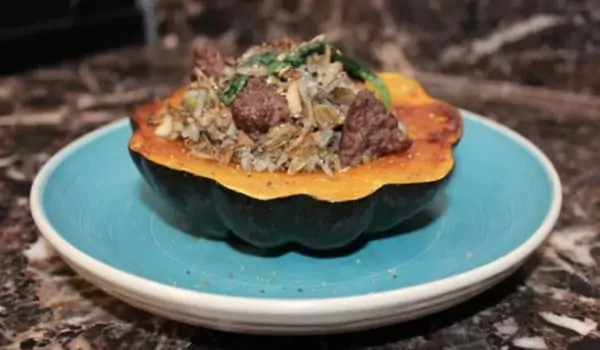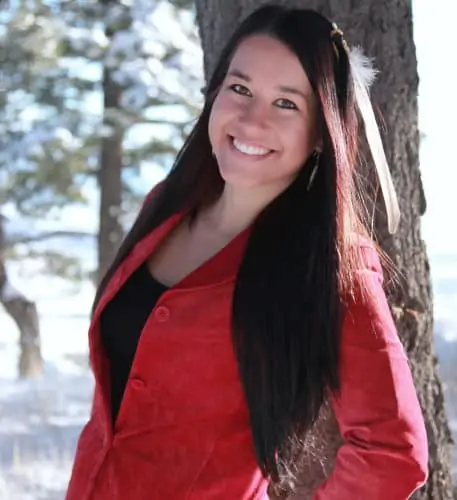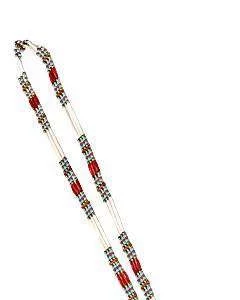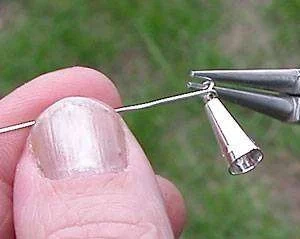Native Americans are changing the way they eat, and Mariah Gladstone, a member of the Blackfeet tribe, is helping lead the way. Gladstone founded an organization called Indigikitchen about five years ago to educate those in Indian Country on where their food is coming from and how it’s gathered and cooked.
“We have access [to food]—that’s a huge part of this,” she said. “But we also need to restore information and get the education around these foods as well.”
To do that, Gladstone teaches cooking classes and creates cooking demonstrations on YouTube. She’s also booked her share of speaking engagements, including a talk at TEDxBozeman in 2017. She wants people to be able to access indigenous recipes from wherever they are, as easily as possible.
“The goal of Indigikitchen has always been to make sure that everyone has access to a resource where they can find indigenous recipes,” she said.
When she started filming videos, she began experimenting with recipes and exploring dishes from other tribes. She wanted to show how delicious traditional foods can be.

“We look at this in this deeper historical context where we have been intentionally disconnected from our traditional foods and after multiple generations of forced reliance on subsidized food systems, our community members do not necessarily have the information about how to prepare those foods,” she said.
When using recipes from other tribes, she’s careful not to share sensitive information and always credits the tribe the recipe is coming from. But acknowledging history and food isn’t about decolonization, Gladstone said.
“I try to think of Indigikitchen and the revitalization of indigenous food systems as indigenization rather than decolonization—a forward momentum,” she said. “We’re not trying to go backwards but we’re trying to use these tools that our ancestors have given us to really inspire and reimagine the future for Native people.”
Gladstone is always expanding Indigikitchen’s reach and eyeing new projects. Currently, she’s building curriculums to introduce indigenous foods into school lunches. She’s also creating content on seed saving and indigenous gardening.
Another exciting project is Indigikitchen “On the Road,” a crowd-sourced recipe collection initiative, wherein selected participants can earn $200 for submitting a recipe and receive full credit for their contributions. Originally, Gladstone had planned to travel and film individuals cooking and telling their stories in their own kitchens. But after COVID-19 hit, she had to tweak the format. So now, Gladstone does the cooking while the participants tell a story and give her step-by-step instructions over Zoom.
“I want you to tell the stories—I want this in your words with your face,” she said. “It’s really creating this documentation that allows people to share those stories and those foods in a way that they see fit.”
She said she’s received recipes from coast to coast, but she’s always looking for more (readers can submit their recipes here).
Before the pandemic, Gladstone met with several people who shared their testimonies of switching to an indigenous diet.
“It’s inspired people to return to the land and really look at foraging in their local areas, for people to look at growing their food and how to use these ancestral foods and how to garden with indigenous philosophies in mind,” she said.
Re-engaging with traditional foods is also quite beneficial for tribal communities who face nutrition-related health conditions.
According to a report from the United States Department of Agriculture, at least 25 percent of American Indian and Alaskan Native people living on reservations are about a one-mile walk from a supermarket while a larger portion of those tribal communities are anywhere from a one-mile to ten-mile drive. Both situations are a problem if the individual can’t walk long distances or if they don’t have a vehicle to get back and forth.
Some health conditions related to poor nutrition include Diabetes and obesity. The American Diabetes Association estimates at least one in six American Indian and Alaskan Native adults has been diagnosed with diabetes. And according to Indian Health Services, American Indian and Alaskan Natives have a lower life expectancy than the general population.
The glaring education gap is a big reason why, but the true impact of indigenization runs much deeper than physical health, according to Gladstone.
“Not only are we responsible for taking care of our bodies with good food but we’re responsible for taking care of the lands and the air and the water that provide us with the good food as well,” she said, adding that historically, Native American communities have been caretakers over biodiversity of ecosystems and have managed landscapes.
“It's about mental health and spiritual connections,” she said.





Roberto "Wolf's Hair" Barboza
says:It’s awesome! that she has taken the path of nutrition. God knows we all need help in taking care of ourselves and our elders. Can’t wait till there’s a book published. Aho! Mitakuye Oyasin!